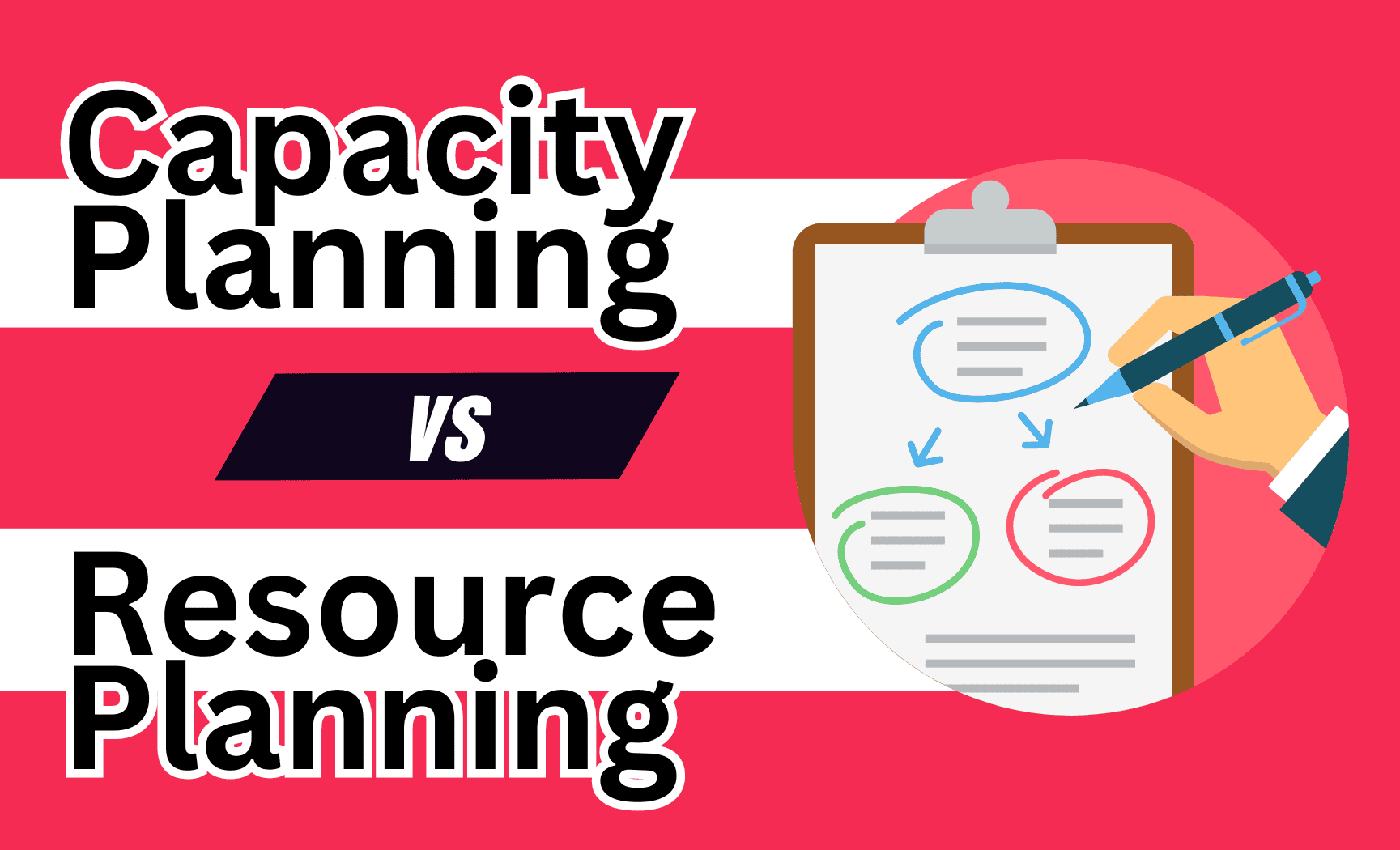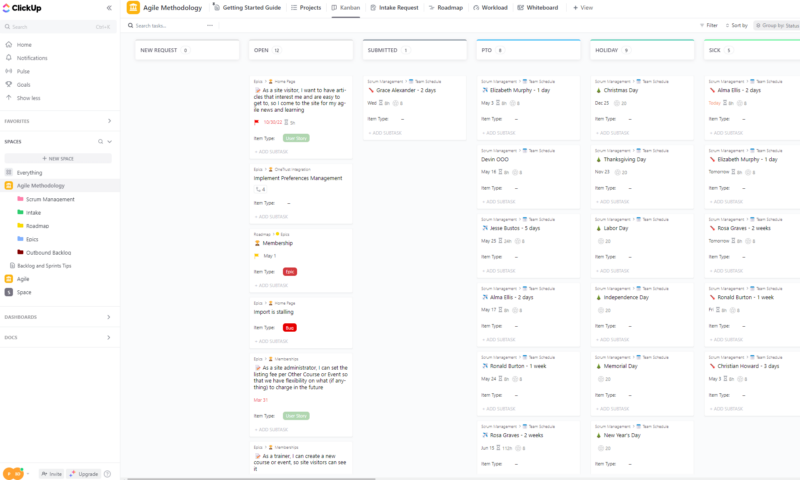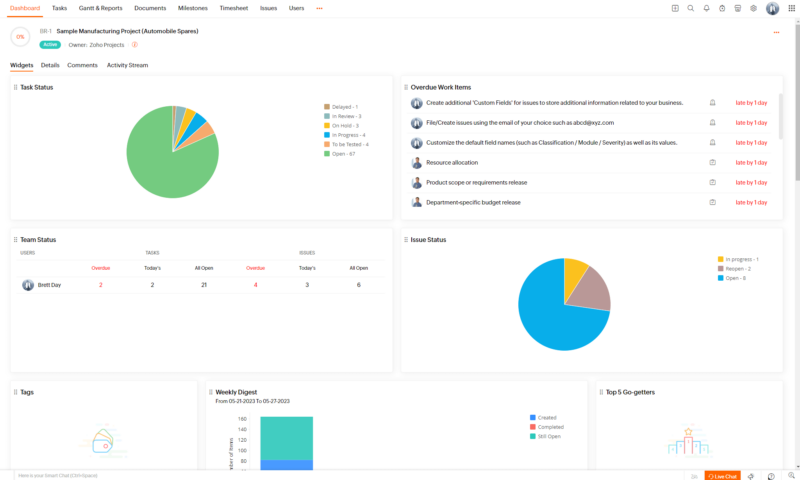
Why you can trust us
- 407 Cloud Software Products and Services Tested
- 3056 Annual Software Speed Tests
- 2400 plus Hours Usability Testing
Our team of experts thoroughly test each service, evaluating it for features, usability, security, value for money and more. Learn more about how we conduct our testing.
Key Takeaways: Capacity Planning vs Resource Planning
- Resource planning tends to happen prior to carrying out capacity planning and involves identifying the resources you need.
- There are best practices to follow for each process, such as risk analysis and calculated growth.
- Making use of capacity planning and resource planning software will make both processes easier.
Facts & Expert Analysis About Resource and Capacity Planning
- Good resource and capacity planning will set the foundation for your projects and production cycles. They help you determine which resources you need and how best to use them. Each process can take time, but doing them correctly will ensure you reach your goals on time and keep your clients and customers happy.
If you’re learning about capacity planning, it’s likely you’ve also come across resource planning. You may be wondering what the difference is between the two. To help you understand, we’ve created this capacity planning vs resource planning guide. It explains the key differences and how you can use each process to plan effectively.
Product and project managers have to juggle many moving parts to ensure success. This involves identifying which specialist workers a business needs and how best to utilize them. It also involves sourcing materials to build products and serve customers. Using the best project management software to plan can help ensure you have the necessary resources.
Put simply, resource planning tends to come before capacity planning. However, it may also be a requirement throughout a project life cycle or production cycle. To ensure you approach both capacity planning and resource planning correctly, it’s best to have as much knowledge as possible about both. Let’s get started.
Meet the experts
Learn more about our editorial team and our research process.
Capacity Planning vs Resource Planning
| Resource Planning | Capacity Planning |
|---|---|
| Which resources do we need to complete a project? | How many projects can we work on? |
| Do we need materials, tools or workers? | How can we best utilize our available resources? |
| Is there an excess of resources we need to reduce? | Which tasks should be allocated based on skill sets and experience? |
| How can we best support the workforce resources we have? | How many products are we able to build to meet demand? |
Resource planning is about assessing your resource requirements. Capacity planning involves resource allocation and ongoing resource management so you get the most out of what you have. We will break down capacity planning vs resource planning separately to give you a more detailed understanding of each one.
Project Management
Check out our project management courses and grab a limited-time offer.
Registration available now!
Enroll Now
What Is Capacity Planning?
Capacity planning follows a specific process and includes different capacity planning strategies. In project management, it starts by assessing your resource availability and then allocating tasks — usually on a kanban board — on the basis of availability, skillset and all-around workload.
The purpose of capacity planning, especially when it relates to the workforce, is to ensure no one is doing too much or too little. Sometimes referred to as “team capacity planning,” it also ensures no one on your team is working on a task that is beyond their capabilities. The goal is to prevent dips in productivity and ensure project completion.

Kanban boards can help project managers plan workloads and determine
whether workers have too much or too little on their plates.
Capacity planning has a slightly different meaning when it pertains to product management. Though team capacity planning is still required, so is planning for materials and the ability to build a specific number of products for your customers. It can also mean building more products than the actual demand in anticipation of growing customer sales.
We’ll now cover the mindset and expectations needed to approach capacity planning and allocate resources effectively. This section will help you avoid poor capacity planning and help you achieve project success for your company.
1. Capacity Planning Is Very Analytical
A project manager must have an analytical mindset when they approach the capacity planning process. In part, they must view certain elements as a matter of fact and allocate resources based on their findings. They must also be able to make predictions and anticipate how details may change during the project, and be prepared to adapt their capacity planning strategies.
The same is true for a product manager or product owner. To avoid waste, they need to match raw materials to the number of products the company has to fulfill. They must also look at past data and try to gauge when a fresh influx of sales may arrive to ensure they can meet that demand when it does arrive. This is also known as lead strategy.
2. Capacity Planning Requires Flexibility
Regardless of how good your capacity plan is, it won’t always be able to stand up to changes in your project or product cycle. With that in mind, a project manager shouldn’t be too attached to their initial plan and should be aware of when they need to adapt. Having a flexible mindset makes it easier to change course and update your plan when necessary.
Though not always possible, it’s best to create a team that also is open to being flexible. That makes it much easier to shift capacity planning strategies while experiencing little to no reduction in productivity.
3. Capacity Planning Should Be Easy to Understand
Though a project manager is likely to be responsible for a capacity plan, they won’t be the only one who has access to the strategy. Each person with access to the plan should be able to easily understand the overall objectives and how resource utilization will help the team achieve each objective.
The best free project management software can help with clear and effective capacity planning. This is especially true for remote teams, as it helps team members access the plan from different locations. Many of the top tools are customizable and can help you make your data more digestible, in turn helping you implement capacity planning across all your teams.

You can use customizable dashboards, like this one in Zoho Projects, to share digestible capacity planning data with your entire team.
4. Be Prepared for Growth
Scalability is exciting and often a core target when developing a strategic process. However, it can also be scary, especially if your company is still in its infancy. Growth could mean taking on new projects or increasing your customer base. Regardless of the industry you’re in, successful capacity planning often leads to business growth.
Managing and reacting to expansion will be much easier if you’re mentally prepared to scale. It’s worth learning about project portfolio management for future projects, as it will give you more confidence and understanding as project demand increases for your business.
Capacity Planning Examples
Though project managers and product managers are often responsible for capacity planning, other departments need it as well. For example, human resources personnel often need to plan when they will have the capacity to onboard new hires and carry out fresh hiring rounds.
Here’s a very basic example of resource capacity planning. Let’s say you work in software development and have three clients. You have to assist each one every day, which amounts to 24 hours of daily work in order to deliver the product on time.
Of course, one software developer alone cannot handle that workload. Therefore, the plan would be to spread the work among three software developers if we consider one working day to last eight hours.
What Is Resource Planning?
Remember that resource planning is not the same as resource capacity planning, which comes after you have looked at the project scope and identified the resources you need. Nor is it only about the type of expertise you need in your workforce. For example, it may also include assessing whether you need resource planning software to complete your tasks.
Think of resource planning for the workforce like this: A financial company needs internal customer software, and they ask your company to build it. The project manager will need to decide who they need to recruit in order to fulfill the project. For example, along with human resources, they will need to hire software developers, a product owner and a scrum master.
Then, they’ll need to assess the tools they need, such as GitHub, which will allow them to code. They’ll also need to decide which software they will need to manage the workload. monday.com and Wrike’s project management software are good options. These are just some of the many considerations to keep in mind during the resource planning process.
Let’s take a look at some of the key characteristics required to implement effective resource planning.
1. Bring a Curious Mindset
When working in resource management, project managers must be prepared to ask questions. Think of it like this: The more you know about your objective, the more effectively you can plan. It helps to be confident when asking customers or external stakeholders lots of questions about their needs and preferences.
That curiosity should also lead to challenging questions. If you feel your end user’s expectations are not quite aligned with reality, you need to be able to bring that up as tactfully as possible. That way, you can agree on an end goal and plan for all the resources you need.
2. Be Proactive
Some people tend to leave all their work until the last minute. Unfortunately, that’s not realistic for resource planning. Make sure you assess your goals and identify needs long in advance. Not only will this give you a great head start but it will also give you more room to adapt if you need to tweak the plans you made.
Ideally, your to-do list won’t overwhelm you and you’ll feel comfortable getting to work right away. Leaving tasks until the last minute can lead to poor resource management, which will negatively impact your project or product cycle. You then run the risk of scope creep rearing its ugly head.
3. Have a Diverse Way of Working
It can be easy for resource managers to become stuck in their ways. The reality is that if you manage multiple projects, you’ll likely need to approach them in different ways. Having a comprehensive resource plan is smart, but don’t be afraid to adapt on an ad hoc basis so you can plan effectively for each project.
In addition, be aware of how to prioritize projects to ensure your team can implement efficient resource allocation once you’ve determined which resources they require. This is where good resource management software can help you manage your approach and build a hierarchy of importance for your projects.
Resource Planning Example
Resource planning is fairly similar to resource capacity planning. For this example, let’s say your company is building a physical product. It’s an interior design company that also builds furniture items. Your resource requirements are a sales manager, a designer and a carpenter, plus all the materials and tools required to build the physical product.
Someone working in resource management will be responsible for identifying all the resources needed so the team can move on to the next phase and carry out the work. They’ll also identify the amount of time it will take to complete the work, allowing the capacity planning team to accurately allocate resources.
Resource and Capacity Planning Best Practices
Capacity planning and resource planning have some best practices in common that will help you plan successfully. For an optimal outcome, stick to the best practices detailed below.
- Analyze potential risks: It’s good to look out for potential risks and roadblocks that may impact both your capacity planning and your resource planning. This includes sickness or a lack of raw materials further down the line. Make a plan for how you will overcome each risk.
- Make your plan accessible: Planning isn’t only for project and product managers — it’s for the whole team. Ensure authorized users can easily access your plan and understand its data. The top project management tools let you share files with multiple users, and some of the best cloud storage services help manage and share files.
- Don’t guesstimate: It’s good to anticipate growth, but there’s a calculated way of doing so. Look at past data or market trends for similar products and increase production on the basis of what you find. Don’t just guess that more demand will arrive; that’s a surefire way of ending up with lots of waste in terms of materials and finances.
Resource Capacity Planning Template
A good resource capacity planning tool will make your work life much easier. Most of the leading software providers also offer templates to help guide you and get started quickly and relatively easily. monday.com has an excellent template for capacity and resource planning. You can learn more about the platform in our monday.com review.

Smartsheet is great for those who enjoy building databases to manage resources.
If you prefer to work in spreadsheets, Smartsheet offers a resource capacity planning Excel template that you can use to add and manage your project data. It’s a great tool for all types of project management. Learn more in our Smartsheet review.
Final Thoughts
That brings our capacity planning vs resource planning guide to a close. Remember to follow best practices, and invest in a project management and resource capacity planning tool if possible to help the process run smoothly. In addition, bookmark this article so you can easily refresh your knowledge.
Did you find this guide useful? Are there other areas of project management you would like us to cover? What is your favorite resource capacity planning tool to manage your resource requirements? Let us know in the comments. Thanks for reading.
FAQ: Resource Planning vs Capacity Planning
-
The three most common types of capacity planning are workforce planning, tool planning and product planning.
-
Resource planning is sometimes referred to as resource capacity planning; however, they are not the same and involve a slightly different implementation process.
-
Capacity planning is the process of resource allocation and production management. Capacity management involves monitoring the plan throughout the project and adapting as needed. Some of the roles and responsibilities for each process overlap.
-
Production planning focuses on how a company will build a product, whereas capacity planning focuses on how a company manages its resources.
The three most common types of capacity planning are workforce planning, tool planning and product planning.n”}},{“@type”:”Question”,”name”:”What Is Another Name for Resource Planning?”,”acceptedAnswer”:{“@type”:”Answer”,”text”:”
Resource planning is sometimes referred to as resource capacity planning; however, they are not the same and involve a slightly different implementation process.n”}},{“@type”:”Question”,”name”:”What Is the Difference Between Capacity Planning and Management?”,”acceptedAnswer”:{“@type”:”Answer”,”text”:”
Capacity planning is the process of resource allocation and production management. Capacity management involves monitoring the plan throughout the project and adapting as needed. Some of the roles and responsibilities for each process overlap.n”}},{“@type”:”Question”,”name”:”Is Capacity Planning the Same as Production Planning?”,”acceptedAnswer”:{“@type”:”Answer”,”text”:”
Production planning focuses on how a company will build a product, whereas capacity planning focuses on how a company manages its resources.n”}}]}]]>
Let us know if you liked the post. That’s the only way we can improve.
